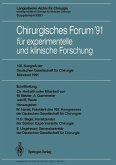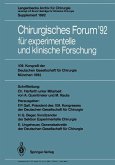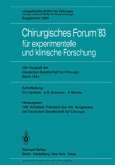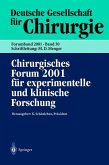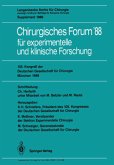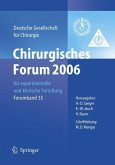After intraperitoneal administration of 14C-labeled PVP iodine with lower and higher molecular weights (viscosity constants K 17 and K 28) in 124 female Wi star rats, both substances were resorbed completely from the peritoneal cavity. The distribution and the retention of PVP with higher molecular weights in all organs is identicaL to the already known phenomena which occur after intravenous administration of PVP. Compared with the half life of PVP K 17, that of PVP K 28 is clearly prolonged in all organs. Furthermore, the renal elimination of the high-molecular weight PVP K 28 is significantly slower. Literatur 1. AMMON R, DEPNER E (1957): Z ges exp Med 128: 607-628 2. HESPE W, MEIER AM, BLANKWATER YJ (1977): Arzneim-Forsch Drug Res 27 (I), 6, 11 58 -11 62 3. SCHILLER ~ REB, G, TAUGNER R (1978): Arzneim-Forsch Drug Res 28 (II), 11, 2064-2070 Dr. G. Gortz, Chirurgische Klinik und Poliklinik im Klinikum Steglitz der Freien Universitat Berlin, Hindenburgdamm 30, D- 1000 Berlin 45 2. Untersuchungen zur pathophysiologischen Bedeutung von transfundierten Thrombocytenaggregaten Pathophysiologic Significance of Tranifused Platelet Aggregates K L. LauteIjung, J. Seifert und W. Brendel Institut fUr Chirurgische Forschung am Klinikum GroBhadern (Dir. : Prof. Dr. Dr. h. c. W. Brendel) und Chirurgische Klinik, Klinikum GroBhadern (Dir. : Prof. Dr. G. Heberer) Wahrend der Lagerung von ACD-Blut bilden sich Mikroaggregate, die vorwiegend aus Thrombocyten bestehen.


